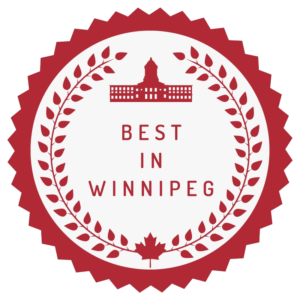Refugee & Asylum
The Canadian Immigration System consists of three categories of asylum.
First, the Refugee and Humanitarian Resettlement Program deals outside Canada applicant
Second, in-Canada Asylum Program for applicant within Canada and
Third, applicant at US boarder.
A refugee can claim asylum status not only from within Canada but also from outside of the Canada. A refugee can apply in these categories under Federal laws.
Please contact our office for further details. We will check your eligibility according to the CIC criteria and will submit your application.
Two different pieces of legislation apply to refugees. Internationally, it is the United Nations High Commissioner for Refugees (UNHCR) Convention and in Canada, it is the Immigration and Refugee Protection Act.
Refugee: The term “Refugee” is defined in 1951 Conference of Plenipotentiaries on the Status of Refugees and Stateless Persons in Geneva Convention and 1967 Protocol. This definition is used in Canadian law and is widely accepted internationally.
1951 Conference of Plenipotentiaries on the Status of Refugees and Stateless Persons (The 1951 Refugee Convention)
- Total States Parties to the 1951 Convention: 145
- Parties to the Convention and Protocol as well: 142
- Total States Parties to the 1967 Protocol: 14
- States Parties to one or both of these instruments: 148
Chapter I, General provisions Article 1
Definition of the term “refugee”
A. For the purposes of the present Convention, the term “refugee” shall apply to any person who:
(2) ……. owing to well-founded fear of being persecuted for reasons of race, religion, nationality, membership of a particular social group or political opinion, is outside the country of his nationality and is unable or, owing to such fear, is unwilling to avail himself of the protection of that country; or who, not having a nationality and being outside the country of his former habitual residence as a result of such events, is unable or, owing to such fear, is unwilling to return to it.
UNHCR provides protection and assistance to almost 59 million refuges in 126 countries (including 1.4 million in Pakistan and 2.9 million in Turkey). In 2016, almost 24,000 refugees (including 1,130 from Pakistan) claimed asylum in Canada.
From 2006 to 2017, 263,140 refugees claimed asylum in Canada.
Canadian “Immigration and Refugee Protection Act” defines the ‘Refugee’ in Section 3(2);
Objectives — refugees (2) The objectives of this Act with respect to refugees are
- to recognize that the refugee program is in the first instance about saving lives and offering protection to the displaced and persecuted;
- to fulfil Canada’s international legal obligations with respect to refugees and affirm Canada’s commitment to international efforts to provide assistance to those in need of resettlement.
- to grant, as a fundamental expression of Canada’s humanitarian ideals, fair consideration to those who come to Canada claiming persecution.
- to offer safe haven to persons with a well-founded fear of persecution based on race, religion, nationality, political opinion or membership in a particular social group, as well as those at risk of torture or cruel and unusual treatment or punishment.
- to establish fair and efficient procedures that will maintain the integrity of the Canadian refugee protection system, while upholding Canada’s respect for the human rights and fundamental freedoms of all human beings.
- to support the self-sufficiency and the social and economic well-being of refugees by facilitating reunification with their family members in Canada.
- to protect the health and safety of Canadians and to maintain the security of Canadian society.
- to promote international justice and security by denying access to Canadian territory to persons, including refugee claimants, who are security risks or serious criminals.
There are 4 categories or exceptions of people who are allowed to make a refugee claim at the Canada-US land border because;
- They have close family members
- They are unaccompanied minors themselves
- They have Valid Canadian Visa, work permit or study permit (No transit Visa)
- They have public Interest (Face death penalty in home country or the US)
1951 Conference of Plenipotentiaries on the Status of Refugees and Stateless Persons (The 1951 Refugee Convention)
- Total States Parties to the 1951 Convention: 145
- Parties to the Convention and Protocol as well: 142
- Total States Parties to the 1967 Protocol: 14
- States Parties to one or both of these instruments: 148
Chapter I, General provisions Article 1 Definition of the term “refugee:
For the purposes of the present Convention, the term “refugee” shall apply to any person who:
owing to well-founded fear of being persecuted for reasons of race, religion, nationality, membership of a particular social group or political opinion, is outside the country of his nationality and is unable or, owing to such fear, is unwilling to avail himself of the protection of that country; or who, not having a nationality and being outside the country of his former habitual residence as a result of such events, is unable or, owing to such fear, is unwilling to return to it.
UNHCR provides protection and assistance to almost 126 countries 59 million refuges (1.4 million in Pakistan & 2.9 millions in Turkey). In 2016, almost 24,000 refugees (1,130 from Pakistan) claim the asylum in Canada. From 2006 to March 2017, 263,140 refugees claim the asylum in Canada.
Canadian “Immigration and Refugee Protection Act” define the ‘Refugee’ in Section 3(2);
Objectives — refugees (2) The objectives of this Act with respect to refugees are
- to recognize that the refugee program is in the first instance about saving lives and offering protection to the displaced and persecuted;
- to fulfil Canada’s international legal obligations with respect to refugees and affirm Canada’s commitment to international efforts to provide
assistance to those in need of resettlement; - to grant, as a fundamental expression of Canada’s humanitarian ideals, fair consideration to those who come to Canada claiming persecution;
- to offer safe haven to persons with a well-founded fear of persecution based on race, religion, nationality, political opinion or membership in
a particular social group, as well as those at risk of torture or cruel and unusual treatment or punishment; - to establish fair and efficient procedures that will maintain the integrity of the Canadian refugee protection system, while upholding Canada’s
respect for the human rights and fundamental freedoms of all human beings; - to support the self-sufficiency and the social and economic well-being of refugees by facilitating reunification with their family members in Canada;
- to protect the health and safety of Canadians and to maintain the security of Canadian society; and
- to promote international justice and security by denying access to Canadian territory to persons, including refugee claimants, who are security risks or serious criminals.
There are 4 categories or exception of people who are allowed to make a refugee claim at the Canada-US land border because.
- Close Family Members
- Unaccompanied Minors
- Valid Canadian Visa, work permit or study permit (No transit Visa)
- Public Interest (Face death penalty in home country or the US)
Note: Above mention information and data are taken from UNHCR and CIC website. For assistance, consult A&M Canadian Immigration Law Corporation, your trusted Manitoba immigration consultant.






